
Alvaro Enciso steadies a cross he placed during a trip to a remote area in Pinal County, Arizona, on Oct. 7, 2025. Enciso's has been placing crosses in memory of migrants who have lost their lives in the Sonoran Desert for 12 years. (César Barrón/CALÓ News)
Tucson, Ariz. – Visual artist Álvaro Enciso has placed more than 2,000 crosses in the Arizona desert as silent tributes to the memory of migrants who have died attempting to reach the U.S. in search of a better life.
At 80 years old, this Colombian-born artist, who has lived in the United States for more than 50 years — the last few in Tucson, Arizona — has dedicated more than a decade to a somber task: placing crosses where many migrants' journeys end. His project is called "Where Dreams Die," and over the past 12 years, he has left thousands of visible signs in the desert, one for each lost life he has been able to trace.
In many cases, the deceased are unidentified; Not even the family knows where their loved one is, and even if they are strangers, Enciso makes sure their existence is honored with a cross.

A cross stands in a remote area in Pinal County, Arizona, on Oct. 7, 2025. Alvaro Enciso has been placing crosses in memory of migrants who have lost their lives in the Sonoran Desert for 12 years. (César Barrón/CALÓ News)
After immigrating to the United States, Enciso lived in New York and New Mexico before arriving in Arizona. He began placing crosses with the intention of doing his part, of letting the world know that people are dying there and few recognize it, he said.
He has dedicated his art, time and money to this work. He doesn't ask for donations, but accepts them. He buys wood, screws, glue and paint to make the crosses. He scouts for locations and organizes trips to get the work done, he said.
At both ends of the crosses, he places small strips of aluminum he scrapes from cans migrants leave in the desert. He paints them in different colors like blue, green and yellow — vibrant hues, he said, because those are the colors of Latin America, where most migrants who attempt to cross the Sonoran Desert come from.

Peter Lucero assists Alvaro Enciso during a trip to a remote area in Pinal County, Arizona, as he sets a cross in place on Oct. 7, 2025. Enciso's has been placing crosses in memory of migrants who have lost their lives in the Sonoran Desert for 12 years. (César Barrón/CALÓ News)
A forgotten graveyard
In early October, CALÓ News accompanied Enciso on one of his tours through the Sonoran Desert.
The first cross he placed was in Pinal County, several miles west of Interstate 10, near Picacho Peak. “We're about 100 miles north of the border, and to get to this place, you have to walk one to two weeks,” Enciso explained.
“Everything has its end. This person's end came at this place,” Enciso said, pointing to the spot where the person crossing the desert, who has yet to be identified, died in 2021. They died approximately a quarter of a mile from a cattle pond.

Peter Lucero kneels before a cross he helped place during a trip to a remote area in Pinal County, Arizona, on Oct. 7, 2025. Lucero helps Alvaro Enciso, who has been placing crosses in memory of migrants who have lost their lives in the Sonoran Desert. (César Barrón/CALÓ News)
Enciso doesn't walk alone on his mission; a man named Peter Lucero, a Tucson resident, is part of his team and accompanies him. Once the cross is in place, Lucero hangs a rosary on it, kneels, makes the sign of the cross and sprinkles holy water on the cross.
The Tucson Samaritans, a humanitarian aid organization, supports Enciso with volunteers and a vehicle to travel to the desert. One of the volunteers is in charge of operating the GPS to get to the exact location where the deceased was found.
A few meters from where he placed the first cross, the desert spoke again — near some bushes were skeletal remains that were later confirmed to be human. They were handed over to the Pinal County Medical Examiner's office. The remains were scattered, and nearby was a smashed Alcatel cell phone. A brutal reminder of what often happens in the desert.

A cross stands in a remote area in Pinal County, Arizona, on Oct. 7, 2025. Alvaro Enciso has been placing crosses in memory of migrants who have lost their lives in the Sonoran Desert for 12 years. (César Barrón/CALÓ News)
According to the organization Humane Borders, whose operations include tracking deaths on the U.S.-Mexico border, more than 1,000 bodies of immigrants were found in the Arizona desert between 2020 and June 2025.
That same day, also in Pinal County, Enciso went to a site where a 21-year-old man named Miguel Ángel García was found dead in 2014. That day, he replaced the cross he had set up there 10 years earlier.
The area surrounding this last point resembled a museum of abandonment: torn backpacks, hats, and clothing, all deteriorated by the passage of time. There were also empty black jugs, some with a rope to carry on the shoulders. All was left behind by people who had navigated through that area. It looked like a cemetery of discarded debris in the middle of nowhere.

Alvaro Enciso stands near a cross he placed during a trip to a remote area in Pinal County, Arizona, on Oct. 7, 2025. Enciso's has been placing crosses in memory of migrants who have lost their lives in the Sonoran Desert for 12 years. (César Barrón/CALÓ News)
Enciso also went to the place where 19-year-old José Valentín González Hernández was found dead on May 3, 2013, according to a Humane Borders map. González Hernández died from environmental exposure.
The young migrant died approximately 30 meters from a dirt road that leads to Red Rock Road and connects to Interstate 10.
Stories turned art
Of the hundreds of cases Enciso has tracked, there is one that is different: that of Jovita García, 35, a woman originally from Hidalgo, Mexico, who died in the desert in 2020 near Three Points, Arizona.
Maite Zubiaurre, a literature professor at UCLA, learned about her and, along with others, is currently making a documentary that also includes the story of a deceased migrant named Valentín Flores Flores, originally from Puebla, Mexico.

Alvaro Enciso digs a hole during a trip to a remote area in Pinal County, Arizona, where he will place a cross on Oct. 7, 2025. Enciso's has been placing crosses in memory of migrants who have lost their lives in the Sonoran Desert for 12 years. (César Barrón/CALÓ News)
“The tragedy is that Jovita died about a mile from a road; she could have been saved,” the professor told CALÓ News.
They hope to complete the film by early 2026, in time to submit it to festivals, the professor said.
“Every person has their story, every crossing has a story to tell, and the story can have a good ending, a tragic ending, an ending that didn't work out because the Border Patrol caught them, but there's always a story,” said Enciso, who traveled to Hidalgo to be a part of the film.
This project he's working on will be his legacy, he explained. He plans to publish a book of photographs of the crosses he has placed, accompanied by stories that could be lost to the desert if no one else were to publish them.
He recently turned 80 and plans to continue as long as his body can take it, he said, with the serenity of someone who has already made an unwavering decision.
César Barrón is an independent reporter covering the transnational communities of Ambos Nogales. He has over 20 years of experience covering the Sonoran communities.

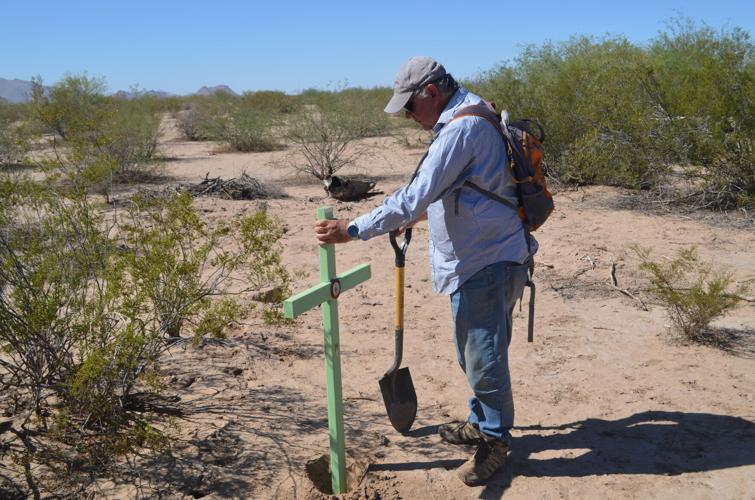
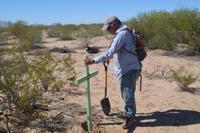

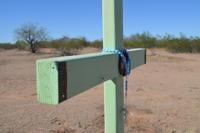
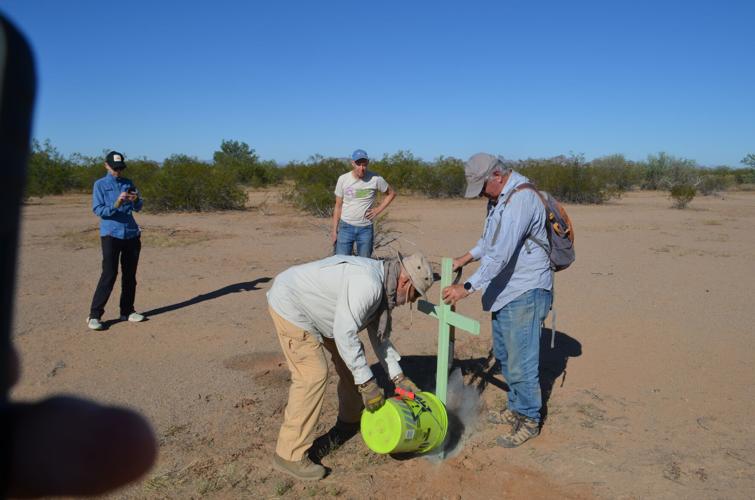
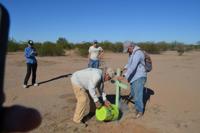

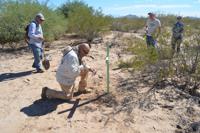

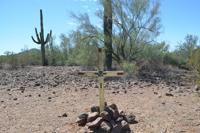
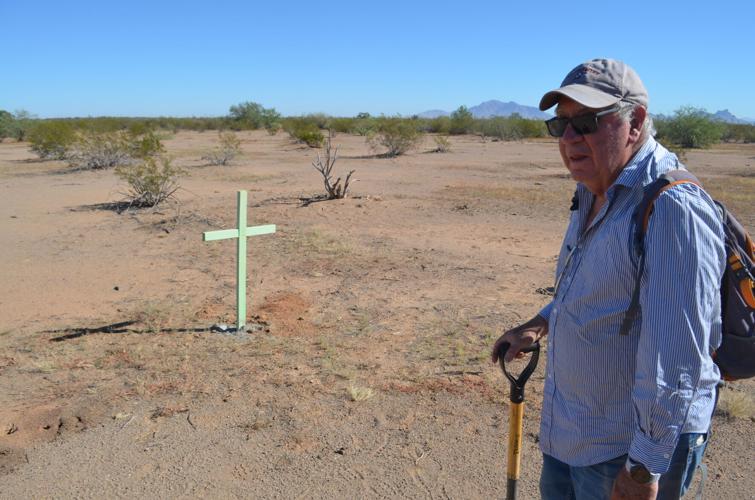
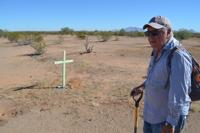
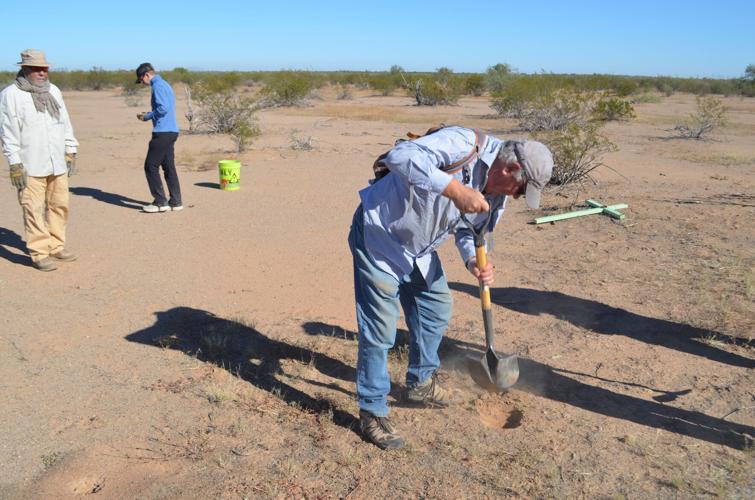
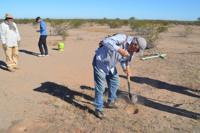

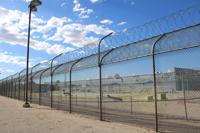

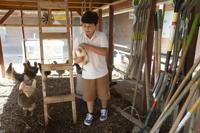




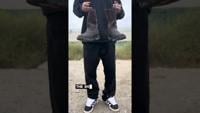
(0) comments
Welcome to the discussion.
Log In
Keep it Clean. Please avoid obscene, vulgar, lewd, racist or sexually-oriented language.
PLEASE TURN OFF YOUR CAPS LOCK.
Don't Threaten. Threats of harming another person will not be tolerated.
Be Truthful. Don't knowingly lie about anyone or anything.
Be Nice. No racism, sexism or any sort of -ism that is degrading to another person.
Be Proactive. Use the 'Report' link on each comment to let us know of abusive posts.
Share with Us. We'd love to hear eyewitness accounts, the history behind an article.